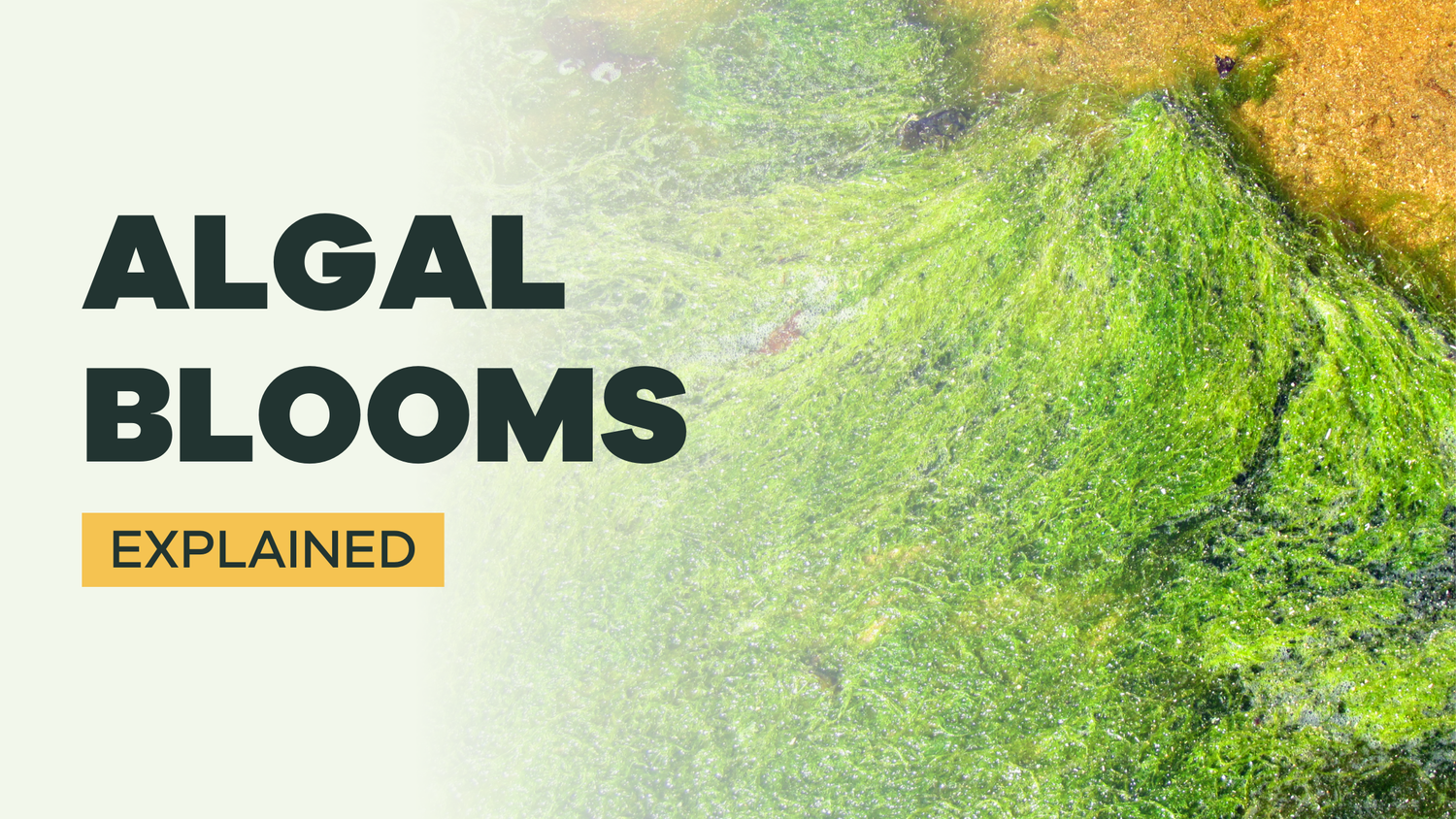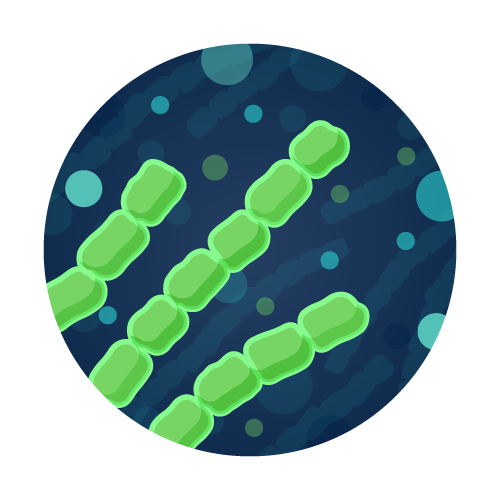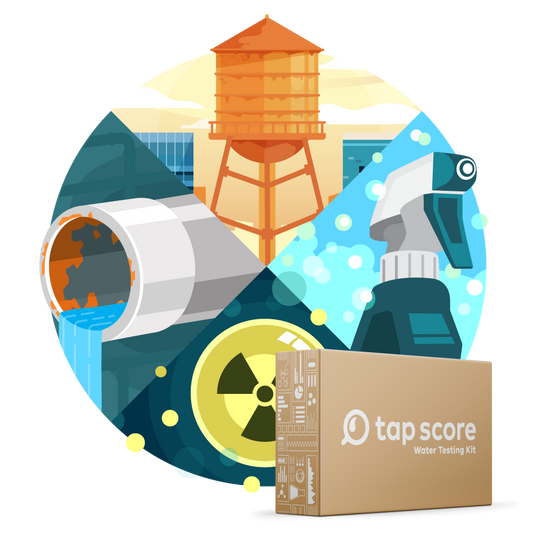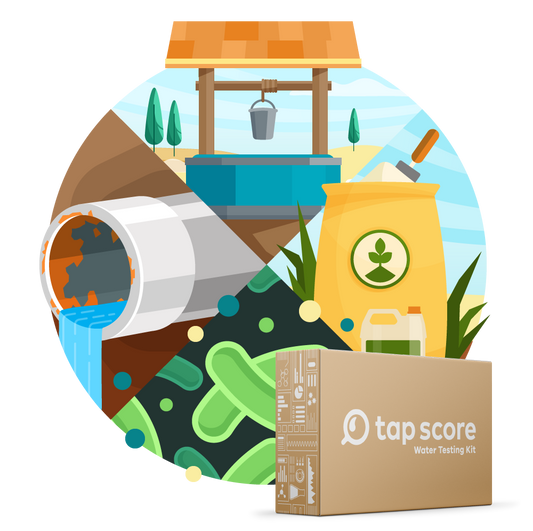
What Is An Algal Bloom?
Our blog is written by real experts— not AI. Each guide is carefully reviewed and updated based on the latest research. Plus, with no affiliate links, you can count on unbiased insights you can trust.
Ranging from microscopic, single-celled organisms to large seaweeds, algae serve a crucial function as building blocks of the food chain and aquatic ecosystems. However, algae may also have detrimental effects on the environment and your tap water. Risk for adverse effects is highest during an "algal bloom": when algae populations grow at a rapid rate and accumulate in both marine and freshwater bodies, like lakes and ponds.
What Are the Two Types of Algal Blooms?
There are two types of algal blooms: nuisance blooms and harmful algal blooms (HABs)–both of which are increasing in frequency and occurring in unprecedented locations in recent years. While nuisance blooms may discolor water, produce a foul odor, and/or cause the water to taste bad, they are not dangerous. HABs, on the other hand, may have detrimental effects on humans, animals, the surrounding ecosystems, and local economies.
What Are the Effects of Harmful Algal Blooms?
Ingesting algae-contaminated water may result in abdominal pain, vomiting, diarrhea, liver or kidney damage, neurotoxicity, difficulty breathing, or in severe cases, death. Skin contact with algae-contaminated water may also irritate skin, eyes, nose, throat or respiratory tract. Eating fish or other animals that have bioaccumulated toxic algae is also potentially harmful to consume, because toxins in animals cannot be removed by cooking.[1]
While these symptoms in humans (and animals too!) are the result of toxic HAB events, non-toxic HABs can also have severe environmental ramifications.[2] The sheer biomass of accumulated algae leads to the death of wildlife by:
- Hypoxia
- Clogging gills of fish and invertebrates
- Smothering corals and aquatic vegetation
Researchers estimate that the cost of HABs in the United States–from medical treatment, fishery closures, reduced seafood & tourism revenue, monitoring–ranges between $24 million and $82 million annually.[3]
Can Algae Contaminate My Tap Water?
Unfortunately, yes. Algal blooms can contaminate your tap water and the most common sign of algae-contamination is a moldy aftertaste. While HABs may affect your drinking water, the majority of the time only taste and odor compounds, not toxicity, are the biggest problems. An estimated 50% of HABs have toxins usually from cyanobacteria, which produce the sometimes-fatal cyanotoxins.[4]
Cyanobacteria Enumeration Water Test
Test for and quantify the blue-green algae in your drinking water, which may result following nearby harmful algal blooms.
Microcystins Water Test
Test your drinking water for microcystins–a class of toxins produced by blue-green algae.
Along with affecting your tap water, HAB events may also affect the food you eat–as fish and shellfish can become contaminated if their habitats are in or near an HAB. It is crucial to avoid food contaminated by algae, as algal toxins are not removed through cooking.
What Do Algal Blooms Look Like?
The presence of foam, scum, or algal “mats” on water surfaces are common features of an HAB event, but they may also be invisible and/or odorless. Because algal blooms may present in a variety of ways, it is not possible to tell if a bloom is harmful through visual or olfactory assessment alone.
Where and Why Do Algal Blooms Occur?
Algal blooms occur naturally in freshwater, brackish water, and marine water all across the world–including all U.S. coastal and Great Lake states. Some known factors that contribute to the rising frequency of HAB events include:
- Nutrient pollution (excessive amounts of phosphorus and nitrogen) [5]
- Wind and water flow modifications
- Changes in water temperature
- Climate change [6]
- Extreme weather events
- Human activity (i.e. adding agricultural and sewage effluents to coastal waters) [7]
While many factors that cause algal blooms are known, it is not well understood how these factors coalesce to form HABs. [8]
Can Algae-Contaminated Water Be Treated?
The effectiveness of water treatment strategies, which can include biological, chemical, and mechanical controls, depends on the growth patterns and species of algae that dominate the bloom. [9] Applying the incorrect treatment process could damage the algae cells and result in the release of intracellular toxins, thus exacerbating toxicity.
The World Health Organization (WHO) does recommend a limit on the acceptable level of toxin exposure, however cyanotoxins are not regulated in drinking water like other contaminants (with Maximum Contaminant Levels). [10] The best way to stay informed about HAB events is to be aware of safety advisories (especially on hot summer weeks).
If your water tastes moldy and you’re wondering if you have algae at the tap, we recommend checking to see if your water source has been implicated in an HAB event.
Sources and References
▾- Harmful Algal Blooms » CeNCOOS
- Harmful Algal Bloom-Associated Illnesses | CDC
- Estimated Annual Economic Impacts from Harmful Algal Blooms (HABs) in the United States
- Health Effects from Cyanotoxins | US EPA
- What is nutrient pollution?
- Harmful algal blooms and climate change: Learning from the past and present to forecast the future
- Approaches to monitoring, control and management of harmful algal blooms (HABs)
- Why do harmful algal blooms occur?
- Nutrient Pollution Policy and Data | US EPA
- Algae and cyanobacteria in fresh water












